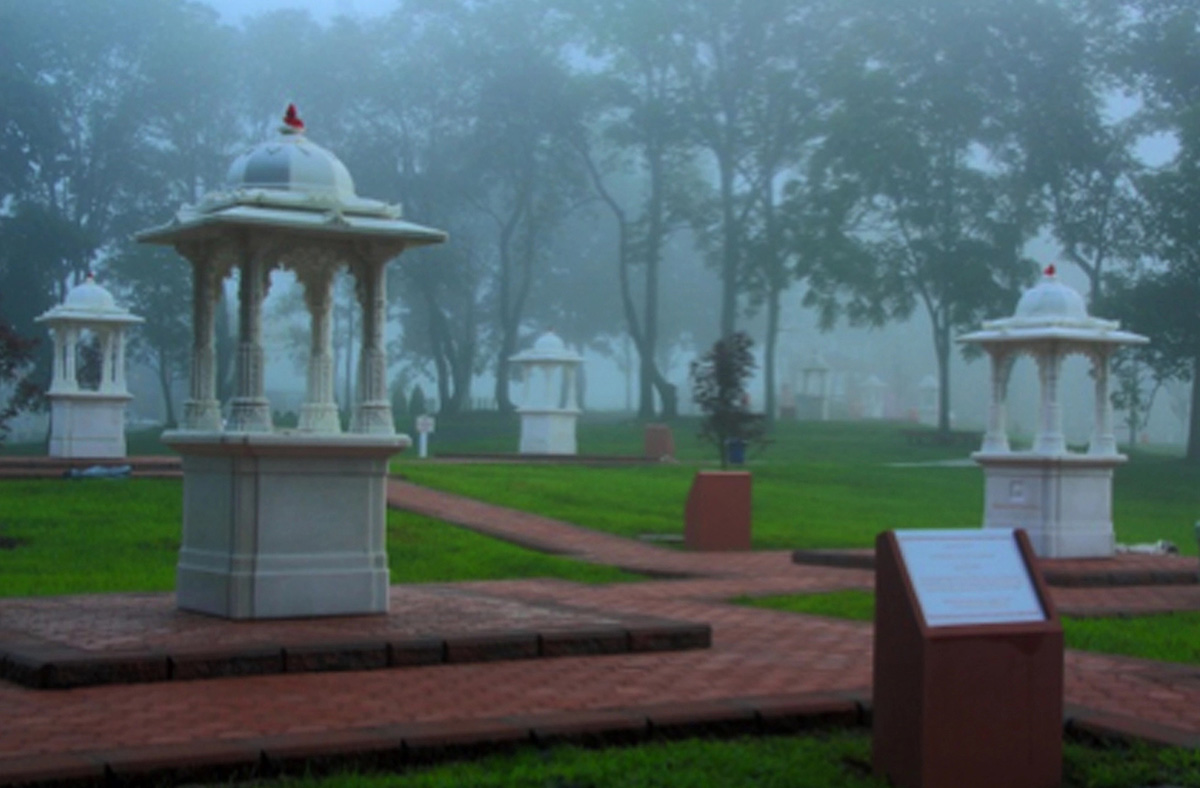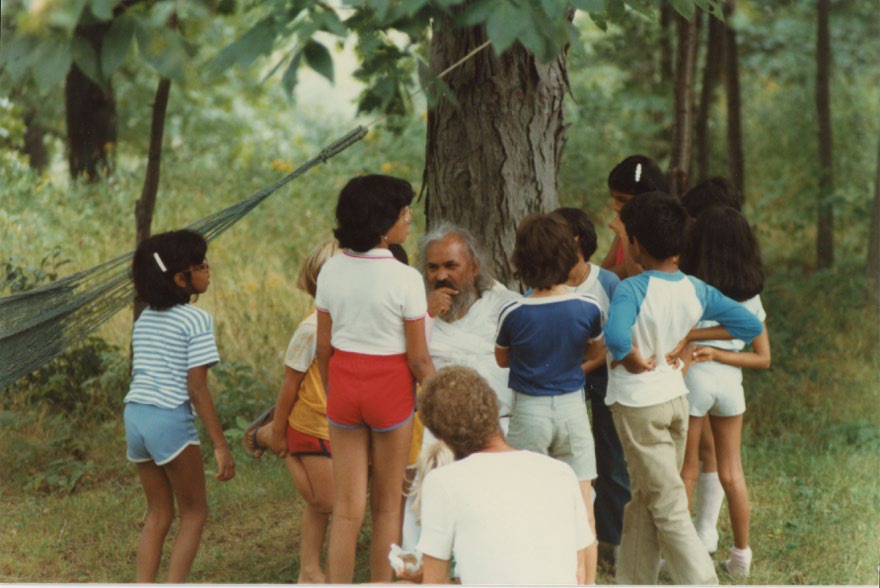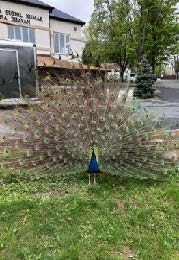Siddhachalam & Guruji
Siddhachalam is a mountaintop homage to Siddhas – the perfect, liberated souls possessing infinite perception, knowledge, energy and bliss, whom some call God. It is a gift of the revolutionary saint, yogi, teacher, peacemaker and environmentalist, His Holiness Acharya Sushil Kumarji Maharaj.
Guruji, as his followers call him, was born on June 15, 1926 in Sikhopur, near South Delhi (later named Sushilgarh in his honor). When 7 years’ old, he forsook home to live with HH Chotelalji Maharaj, a Sthanakwasi Jain monk. On April 20, 1942, Guruji became a Jain monk. He left for the heavens on April 22, 1994.
Guruji was a renowned spiritual leader of India. He was sought by successive prime ministers and presidents of India, heads of other nations, faith leaders and ordinary people for his boundless wisdom, love and peacemaking. In 1975, he publicly announced that he will be breaking the age-old taboo against Jain ascetics’ use of mechanical means of transport. He said he was prodded in meditation to do so by the 12th c. Acharya, Dadaguru Manidhari Jinchandra Suriji Maharaj. Dadaguru asked him to go to faraway lands to spread Bhagwaan Mahavira’s message of ahimsa (non-injury) and anekantvada (belief that no one has a monopoly on truth).
The assignment was not unexpected. Guruji said that when he was 14 or 15, he described Siddhachalam during meditation to his spiritual Guru, the 19th c. Jain monk, HH Roop Chandji Maharaj, as a shrine to Siddhas that he will one day build. On June 17, 1983, the 8th anniversary of his momentous act of traveling to the United States, Guruji founded Siddhachalam.
Guruji often said that his purpose in life was to become one with Lord Parsvnath, the perfect yogi (“Sushil Muni ka dheyay yahi hai, Paras may ram javo rae”). Bhagwaan Parsvnath had attained omniscience in 84 days of unbroken meditation. Guruji said: “This is my basic faith – if someone does not have love for the higher souls, such person cannot realize truth. My Lord appear before me. I want to see you. I want to see you.”
Guruji was known to stay in steadfast meditation for days. He naturally traversed previous lives, time and space. Yet, he disavowed the life of a recluse. Instead, he helped others spiritually awaken themselves. A testimony to his endeavors was peace and political accord in Punjab in mid-1980s.
From his teens when he first felt Namokar Mantra’s healing powers, Guruji devoted himself to mastering it. At Siddhachalam, he taught the Mantra and its principles to ashram residents – most of whom were white Americans. In the Song of the Soul, which he wrote at Siddhachalam, he said of the Mantra: “There is a deep, secret science to the combination of sounds. Specific syllables are seeds for the awakening of latent powers…Namokar Mantra is my goal and my life. It is my love and my destiny. Through it, I can serve and guide along the path of non-violence.”
When he visited Siddhachalam, it was a haunted and abandoned children’s summer camp. Ascetics with him said it was unfit for meditation. Guruji engaged in sadhana, tapa and meditation here and transformed it into a vibrant ashram, monastery and animal and nature preserve. In suffusing it with energy and vigor, he said:
“There is a powerful vibration here. Ultimately, the situation at Siddhachalam will be that when anyone [true seeker] comes here, he will get enlightenment. I will do some work perfectly; I know what the result will be. Whether the Guru sits here or not, whether anyone gives suggestion or not, kundalini will awaken. This will be the situation, and I will do this in my lifetime and yours. You can accomplish anything here. You can meditate and you will get success. You can do business and you will get success. And you can play. The time is coming.”
Nestled amidst rolling fields, lush forests, natural springs and ponds, Siddhachalam today is comprised of temples, residence for visiting monks and nuns, library, cabins for temporary stay, congregation hall, community dining hall, playgrounds, and a faithful replication of Shikharji over three miles of nature and meditation trails.
Siddhachalam reflects Guruji’s grand vision in many ways. The main temple, for instance, has unornamented, magnificent marble idols of Lord Adinath, Lord Parsvnath, Lord Mahavira, Lord Chandraprabhu, and Lord Shantinath, all on one altar. Yet, two of the idols are in the Digambar and threeintheShwetambartradition. Thetempleisthoughtfullymadetodraweventhosewhoreject idol worship.
Eighteen years after Guruji left for the heavens, his dream of Siddhachalam as a place with many shrines in homage to the Siddhas was fully realized. Inspired by Guruji, an ardent admirer energized the community to replicate Shikharji, Jains’ most important place of pilgrimage, at Siddhachalam. Shikharji at Siddhachalam is the world’s first, to-scale replication of the storied sacred mount dotted with shrines in homage to those who attained moksha there.
For a spiritual aspirant, Siddhachalam is a place of pilgrimage and illumination. Guruji conceived it as the wellspring of an enlightened form of Jain belief and practice, free from divisions of race, religion, caste, creed, sect, sex or attainment.
Siddhachalam welcomes all.



